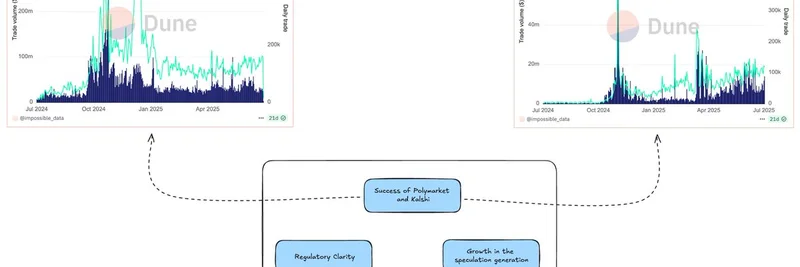In the fast-paced world of blockchain and crypto, staying ahead means keeping an eye on emerging trends that could shake up the market. Recently, Castle Labs, a research and advisory firm in the space, shared some compelling insights on the growth of prediction markets. Their tweet highlights key factors driving this surge, drawing from research by Mason Nystrom at Pantera Capital.
What Are Prediction Markets?
If you're new to this, prediction markets are essentially decentralized platforms where people bet on the outcomes of real-world events. Think elections, sports results, or even whether a new tech product will launch on time. Platforms like Polymarket and Kalshi allow users to trade contracts that pay out based on whether an event happens or not. It's like a blend of gambling and investing, but powered by blockchain for transparency and efficiency.
Castle Labs points out that the best prediction markets thrive on three core elements:
- High Frequency: Events that resolve quickly, keeping traders engaged and liquidity flowing.
- High Leverage: The ability to amplify bets, attracting risk-takers looking for big wins.
- High Market Outcome Value: Outcomes that matter a lot, drawing in more participants and higher stakes.
These features have propelled Polymarket and Kalshi to new heights, with massive volumes during high-profile events like political elections.
Connecting Prediction Markets to Meme Tokens
Now, you might be wondering: what does this have to do with meme tokens? Well, meme tokens thrive on hype, community, and viral events—much like the bets placed on prediction markets. For instance, during election seasons, meme tokens tied to political figures or themes often spike in value. Prediction markets amplify this by allowing traders to bet on related outcomes, creating spillover effects into meme token prices.
Imagine a meme token inspired by a celebrity endorsement or a cultural phenomenon. If a prediction market opens bets on that event's success, it could drive attention and liquidity to the token. We've seen this interplay before: high-leverage bets on platforms like Polymarket can fuel speculative trading in meme coins, turning predictions into self-fulfilling prophecies.
Moreover, as prediction markets go mainstream—with bets on everything from FDA approvals to climate events—they open doors for innovative meme token projects. Builders could create tokens that integrate with these markets, perhaps offering yields based on bet outcomes or community-voted predictions. It's a natural evolution in DeFi, where meme culture meets real-world speculation.
Why This Matters for Blockchain Practitioners
Castle Labs' shoutout to Nystrom's research underscores a broader shift: prediction markets aren't just niche anymore; they're becoming a cornerstone of blockchain utility. For meme token enthusiasts, this means new opportunities to hedge risks or capitalize on trends. If you're holding volatile memes, keeping tabs on related prediction contracts could provide early signals for pumps or dumps.
Pantera Capital's full report, linked in the original tweet, dives deeper into this "Prediction Market Renaissance." It's worth a read if you're serious about leveling up your crypto knowledge base.
As Castle Labs says, "Onward." The blockchain space is evolving rapidly, and blending prediction markets with meme tokens could unlock the next wave of innovation. Stay tuned to Meme Insider for more updates on how these trends shape the meme economy.



